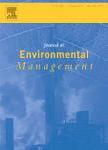版权所有:内蒙古大学图书馆 技术提供:维普资讯• 智图
内蒙古自治区呼和浩特市赛罕区大学西街235号 邮编: 010021

作者机构:Univ Passo Fundo UPF Grad Program Civil & Environm Engn Passo Fundo RS Brazil Univ Passo Fundo UPF Fac Engn & Architecture Passo Fundo RS Brazil Fed Univ St Maria UFSM Grad Program Chem Engn PPGEQ Santa Maria RS Brazil Fed Univ Rio Grande UFRGS Grad Program Min Met & Mat Engn PPGE3M Porto Alegre RS Brazil Univ Passo Fundo Campus 1L1 Bldg BR 285Bairro Sao Jose BR-99052900 Passo Fundo RS Brazil
出 版 物:《JOURNAL OF ENVIRONMENTAL MANAGEMENT》 (环境管理杂志)
年 卷 期:2022年第323卷
页 面:116220页
核心收录:
学科分类:0830[工学-环境科学与工程(可授工学、理学、农学学位)] 08[工学]
基 金:National Council for Scientific and Technological (CNPq) [403658/2020-9, 140541/2021-7] Coordination for the Improvement of Higher Education Personnel (CAPES)
主 题:Dyes Emerging contaminants Heavy metals Polycyclic aromatic hydrocarbons Phenolic substances Rhodococcus
摘 要:Rhodococcus is a genus of actinomycetes that has been explored by the scientific community for different purposes, especially for bioremediation uses. However, the mechanisms governing Rhodococcus-mediated bioremediation processes are far from being fully elucidated. In this sense, this work aimed to compile the recent advances in the use of Rhodococcus for the bioremediation of organic and inorganic contaminants present in different environmental compartments. We reviewed the bioremediation capacity and mechanisms of Rhodococcus spp. in the treatment of polycyclic aromatic hydrocarbons, phenolic substances, emerging contaminants, heavy metals, and dyes given their human health risks and environmental concern. Different bioremediation techniques were discussed, including experimental conditions, treatment efficiencies, mechanisms, and degradation pathways. The use of Rhodococcus strains in the bioremediation of several compounds is a promising approach due to their features, primarily the presence of appropriate enzyme systems, which result in high decontamination efficiencies;but that vary according to experimental conditions. Besides, the genus Rhodococcus contains a small number of opportunistic species and pathogens, representing an advantage from the point of view of safety. Advances in analytical detection techniques and Molecular Biology have been collaborating to improve the understanding of the mechanisms and pathways involved in bioremediation processes. In the context of using Rhodococcus spp. as bioremediation agents, there is a need for more studies that 1) evaluate the role of these actinomycetes on a pilot and field scale;2) use genetic engineering tools and consortia with other microorganisms to improve the bioremediation efficiency;and 3) isolate new Rhodococcus strains from environments with extreme and/or contaminated conditions aiming to explore their adaptive capabilities for bioremediation purposes.